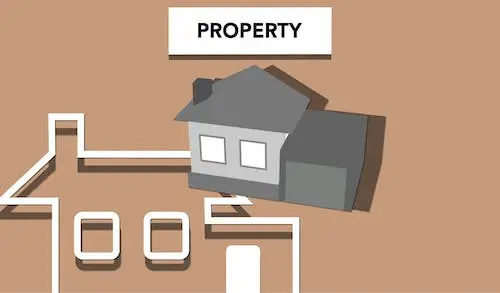
Do you ever wish your home was worth more?
While buying or building your home might’ve already cost you a lot, price appreciation could allow it to be worth more than you spent. Regardless of your plan for your home—if you want to sell it in a few years or pass it down to your children when the time comes—increasing your home’s value can be a wise investment.
Many factors can affect your home’s price appreciation, including its location, size, condition, and the state of the real estate market. However, as a homeowner, you can take to increase your home’s and influence its price appreciation. This article explores a few ways to improve your home’s value.
7 Ways to Increase Your Home’s Value
No doubt, your home is a valuable asset. Increasing its value could allow you to earn more than you realize. But it requires you to pay close attention to the different areas that home buyers value. Below are a few tips to boost your home’s market value.
1. Renovate Your Kitchen
Many homeowners see the kitchen as a staple of their home; for some, it can even be their favorite area. For this reason, prioritizing your kitchen can be an excellent approach to increasing the property’s overall market value.
Buy more modern appliances, upgrade your countertops, and install aesthetically pleasing and durable cabinets. These upgrades give your kitchen the facelift it needs to be more attractive to investors.
The kitchen’s lighting also plays an essential role in its appearance. Bright and well-placed lighting can make your kitchen feel more open and spacious. It can excite homeowners to hop in the kitchen, even if they don’t have much cooking experience.
2. Update Your Bathroom
A modern and functional bathroom can significantly affect how potential buyers perceive your home’s value. The bathroom’s design can reveal much about the property and the owner. A well-maintained bathroom means you have excellent attention to detail and that you prioritize hygiene.
You can update your bathroom in many ways. To make it look newer, you can try replacing outdated fixtures like lamps, sinks, and tiles.
Alternatively, making changes to your bathroom allows you to tie your home together, especially if the design of your bathroom and the rest of your space are different. Failing to do this can date your bathroom and disrupt the design language of your otherwise modern-looking home.
When updating your bathroom, consider the latest design trends and focus on creating a bright and clean space. Potential buyers may prefer neutral colors and simple designs, as they allow for personalization and appeal to various tastes. Additionally, ensure your bathroom is functional and meets the needs of modern living.
3. Improve its Curb Appeal
Your home’s curb appeal refers to its appearance from the sidewalk—people’s first impression as they pass by your property. Improving this factor is a simple yet effective way to boost its value.
A way to do this is to improve your landscaping. Well-cut grass and trees can immensely give your property more personality. Giving your house a fresh coat of paint can also help make it stand out from neighboring properties. Additionally, don’t underestimate your door and windows, either. If messy or looking plain, they can depreciate your home’s value more than you realize.
4. Add Energy-Efficient Features
Many homeowners want to reduce their carbon footprint. They install solar panels and use sustainable materials to build their home. Installing energy-efficient features is a great way to capture the homeowners looking to reduce their environmental impact and electricity costs.
When considering adding energy-efficient features to your home, it’s essential to prioritize the ones that will significantly change how your home consumes energy. For example, upgrading your windows to double-pane or low-emissivity glass can dramatically reduce energy loss and improve insulation.
Similarly, replacing old appliances with energy-efficient models can reduce electricity bills and make your home more environmentally friendly.
5 Create Additional Living Space
The living room is foundational to any household, but you don’t have to limit it to just one. If you have extra garage or basement space, you can convert these areas into another living room-type area for people to relax and enjoy recreational activities. It makes the home feel more spacious and offers potential buyers more value.
Consider how it will look with the rest of your home when adding living space. For example, if you’re finishing your basement, you may want to add a bathroom and a small kitchenette to make it a functional living space. If you’re building an addition to your home, make sure that you design it to complement its existing architecture and style.
6. Upgrade Your Home’s Systems
Outdated home systems can diminish your home’s value. The problem is that many property owners overlook these because these aren’t as obvious a concern. Paying attention to your home’s systems—cooling and heating systems, plumbing—can boost your home’s value more than your neighbors.
So, upgrade your home’s systems as much as possible to allow potential home buyers to keep up with the rush of modern life.
7. Add a Deck or Patio
Outdoor spaces have become popular recently, and homebuyers are willing to pay an attractive price for homes with a deck or patio. If your home already has an outdoor space, consider renovating it to make it more appealing to potential buyers.
Choosing suitable materials is essential when considering adding a deck or patio. You’ll want to pick materials that are durable, weather-resistant, and low-maintenance to minimize the need for upkeep.
Composite decking is an excellent choice because it’s made from recycled materials and is durable. It also requires very little maintenance, making it a popular choice among homeowners. Alternatively, stamped concrete is another great option because it’s versatile, durable, and easy to maintain. You can customize it to mimic the look of other materials, such as stone, brick, or tile.
Spice Up Your Living Space
Investing in your home is more than just buying the property and enjoying living in it. More often than not, it involves caring for it, maintaining its appearance, and improving different parts of the house.
Remember that improving your home’s value isn’t an overnight operation. Frequently, it requires spending even more on repairs and renovations. You may even need to speak to an interior designer or architect to implement the changes necessary to increase your property’s value.
While costly, these pay off tremendously if you decide to put the property up for sale.
You might also like:
